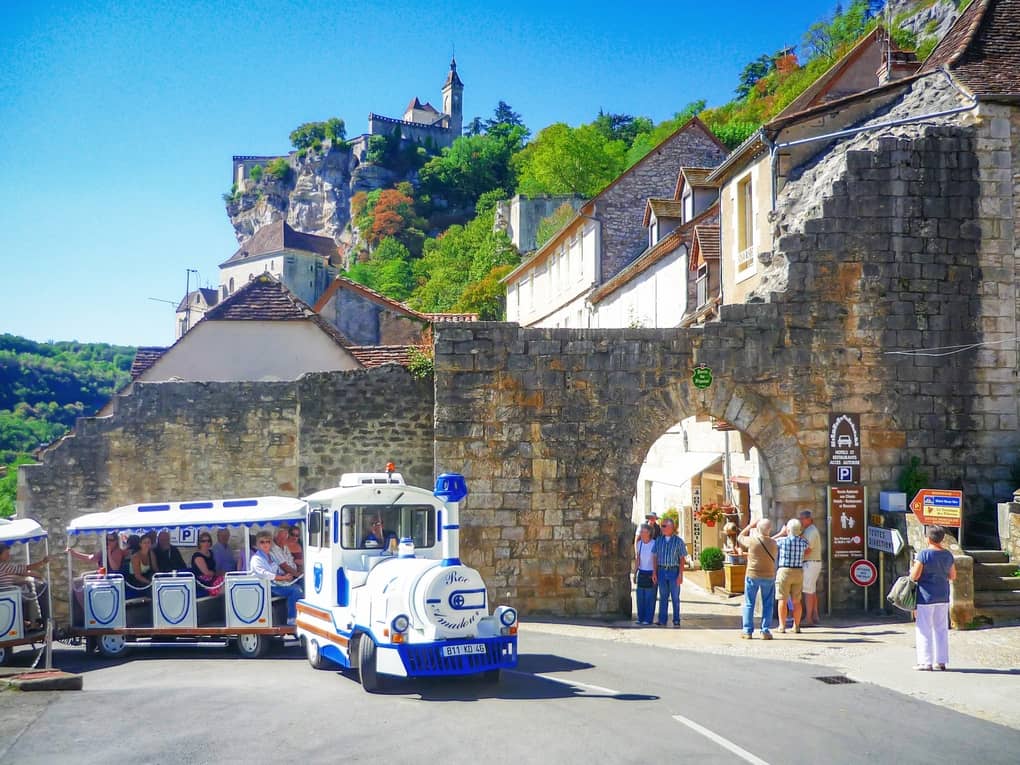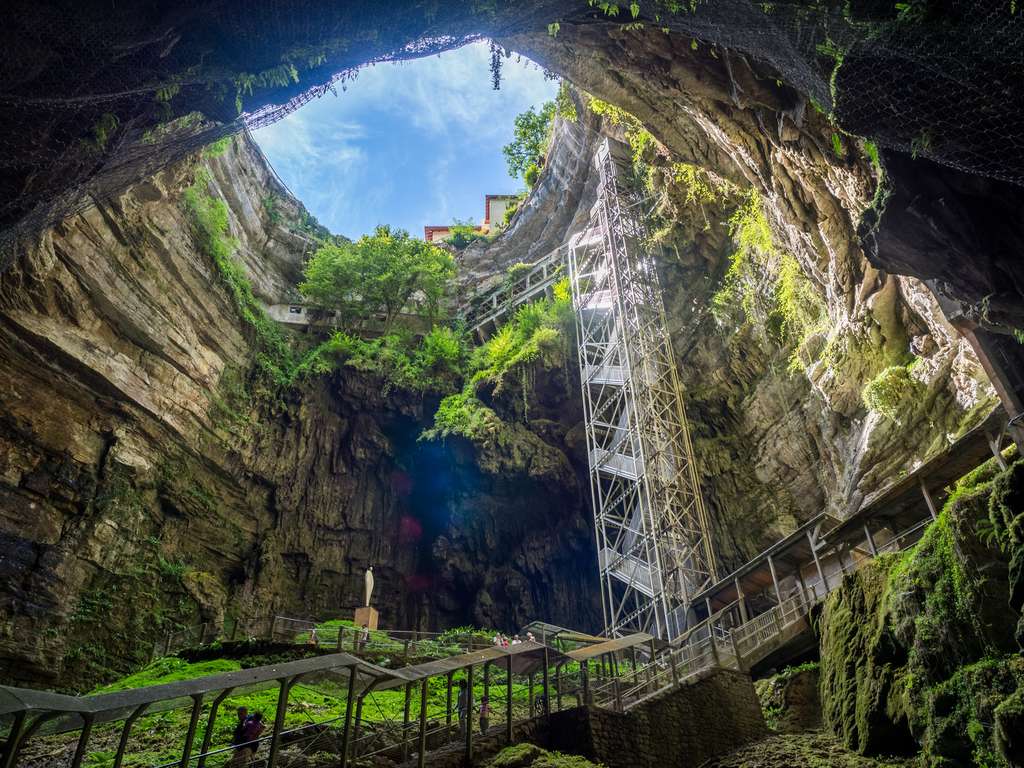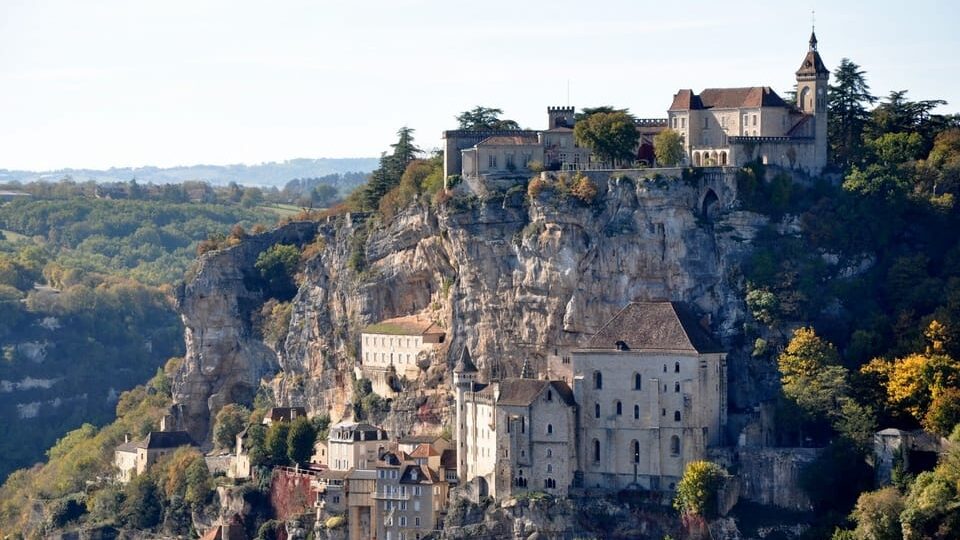What is Rocamadour Famous For?
The commune of Rocamadour in Southwestern France is one of the most beautiful places in the country. It’s setting in a narrow path just above a River Dordogne tributary and its historical monuments, including the Blessed Virgin sanctuary that has attracted pilgrims for hundreds of years- like kings, nobles, and bishops- from different parts of the globe is one of its major selling points.
Rocamadour remains part of the Grand Sites of the country. In its splendor and grace, it is a UNESCO World Heritage Site, further strengthening its pilgrimage credentials. Today, Rocamadour is among the country’s foremost tourist destinations.
>>Also Read: Is Rocamadour Worth Visiting?
Here Is A List Of Exciting Things That Makes Rocamadour Famous:
Location and Access
The first item on the list is Rocamadour’s location in the Lot department far north of the Occitanie area. Not far from the Dordogne valley and Périgord, the village is located in the middle of a regional, national park- Parc Naturel Régional des Causses du Quercy. By road, you will find Rocamadour 26 km NNE of Cahors. It is situated on Alzou’s right bank.
From the A20 autoroute, the village can be reached and alternatively by train via Capdenac – Gare de Rocamadour-Padirac on the Brive-la-Gaillarde-Toulouse railway. It might interest you to know that two regional airports serve Rocamadour and they offer simple access to the Dordogne Valley. Located just a few kilometers from several of the region’s major attractions is the Aéroport Brive Vallée de la Dordogne (BVE) while situated 6 km south of Bergerac is the Aéroport Bergerac Dordogne Périgold (EGC).
History and Culture
King of England, Henry II, and Eleanor of Aquitaine is said to have been to Rocamadour’s pilgrimage site. Also known to have visited are Louis XI and Charles IV, among others. According to stories, after he had arrived to live as a hermit at the behest of the Virgin Mary, it was here that the preserved body of Zacchaeus (who later became Saint Amadour) was discovered.
Today, the Chapelle de Notre-Dame hosts the Black Madonna that the pilgrim Zacchaeus is said to have brought with him. This piece is made from two pieces of wood and is said to possess healing powers. As recorded in the Book of Miracles in 1172, Our Lady of Rocamadour or the Black Madonna healed diseases, rescued sailors, delivered prisoners from the chains of oppression, and protected several soldiers in the war.
Apart from being a pilgrimage site, the cliff walls are also said to host a shard of the broken ‘Durandal’- a sword once used by Roland, the 8th-century hero. This story bears semblance with Excalibur in England and has been adorned over the centuries in poetry and song.

Fete des Fromages Fermiers (Cheese Festival)
About 30 years on and Rocamadour continues to maximize the Pentecost weekend to celebrate its popular traditional cheeses produced in the region since the 1400s. There is a tournament that involves cheese tasting, the best farmhouse cheese, local music, feasting, and face painting.
As a practice, a foreign cheese from another region or country is invited as a distinguished guest every year. When you attend this cheese festival, you will have the opportunity to shop at a great cheese market and the chance to sample all their wares. It is a colorful, friendly fete and gourmet meeting for lovers of cheese.
Dramatic Architecture
The Basilique St-Sauveur is backing the cliff and was built in the Romanesque-Gothic style from the 1000s to the 1200s. It is embellished with paintings and inscriptions that recount celebrity visits, including Philippe the Handsome. Chapelle St-Michael is an 1100s Romanesque sanctuary that is protected by an overhanging rock. Its interior features well-preserved frescoes from the 1100s. The Chapelle Miraculeuse features Saint Amadour’s tomb. Suspending from the roof is a cloche miraculeuse and a cast iron bell. No spring or rope when it rings, so it is known to be a miracle.
Grand Escalier
Just before reaching the village’s main sanctuary, you will come across the 216 steps of the Grand Escalier. Several pilgrims, including Saint Louis (French King), Saint Anthony of Padua, and Saint Dominic, have climbed its stairs. This is the most difficult part of the pilgrimage and a way of doing penance prior to encountering Our Lady of Rocamadour.
La Porte Sainte
The concluding pathway to the Shrine of Our Lady of Rocamadour is this place. When you visit, do not forget that it is important to wear the right dress. La Pointe Sainte invites a lot of visitors from different parts of the world.
Grottes des Merveilles – Caves of Wonder
Set in the commune of Rocamadour in the Lot, the Cave of Wonders is close to the popular religious city that hosts a chapel and a basilica that pilgrims visit through a staircase. The cave is situated on top of the Alzou, on the river’s right bank, and was excavated by the owner in 1920. In 1921 specialists studied it and made it accessible to the public that year. Grottes des Merveilles features a broad long oval room of 45 m, 25 m wide, and 3 m high that has several natural arrangements and Uygur. You should go with a camera because the views are spectacular.
There is a recess in one of the walls where depictions of horses, hands, deer, and a cat can be found. They are painted black or red or engraved. Scholars have dated this place to 20,000 years. These pieces still evoke other Paleolithic cave drawings or engravings unearthed in the same region like Pech merle or Cognac cases especially.

Chapelle de Notre-Dame
Chapelle de Notre-Dame hosts the Black Madonna statue that the pilgrim Zaccheus is known to have brought with him. From two pieces of wood, this statue is made and is believed to be imbued with healing powers. As contained in the 1172 Book of Miracles, the Black Madonna or Our Lady of Rocamadour worked immensely in liberating those in shackles, assuring victories for soldiers in war, and healing the sick.
Basilique St-Sauveur
Built from the 1000s to the 1200s, directly into the cliff’s frontal, Basilique St-Sauveur is Cite Religieuse’s largest church. This Romanesque-Gothic sanctuary of worship has embellishments, paintings, and inscriptions showing the number of its notable visitors, including the likes of Philippe the Handsome.
When you visit, look up to see one of the oldest popular clocks in the world that have been hanging on the ceiling since the 8th-century. The confessionals are working and feature elaborately carved wooden ornamentation. The sanctuary has the orientation akin to the transition era, facing the rising sun.
Rocher des Aigles
Grace, one of the world’s most stately free flight, shows that features parrots, birds of prey, at Rocher des Aigles. This bird abode focuses on the reproduction of eagles, caracaras, parrots, vultures, and owls. Kids would enjoy seeing the birds in the feeding session and watch the experts tender the young birds. Explaining the process of reproduction in captivity, the informational panel seeks to preserve the genetic pool of endangered species like the Griffin vulture, Imperial eagle, and Andean condor.
La Foret des Singes
Watch monkeys playfully meander at the monkey research center- La Foret des Singes, that concentrates on Barbary Macaques’ social behavior. Featuring visual information boards, short video docs, and volunteers trained to respond to every question, this center has a lot of information on the highly evolving animals under observation. You can ask the guides about the habitats and behavioral patterns of the species living at the park and watch their habit.
Cite Religieuse
In the Alzou canyon perching halfway up a cliff, Cite Religieuse can be accessed by paying a small fee to take a lift down or by walking to the Grand Escalier stairway. Those who take the lift miss the landing 140 steps up, which has a great view of the fort. At the top, see the 1000s Place St. Amadour, encircled by 7 chapels of Notre Dame and paved with white stone. The chapels are set inside the 1100s buildings like St Amadour crypt, St Sauveur Basilica, and the chapel of Notre-Dame, with its popular Black Madonna. Do not miss the brilliantly intact mural paintings in St. Michel chapel, which is built into the cliff’s frontals.
What is Rocamadour Famous For? – Summary
Rocamadour is a gem in architectural structures from different eras and a pilgrim’s paradise. However, it is not too friendly for people with reduced mobility. However, there is an elevator available to places like the Sanctuaire area and its religious buildings. Rocamadour is particularly famous for its religious history and fun destination for those who visit- young and old.
